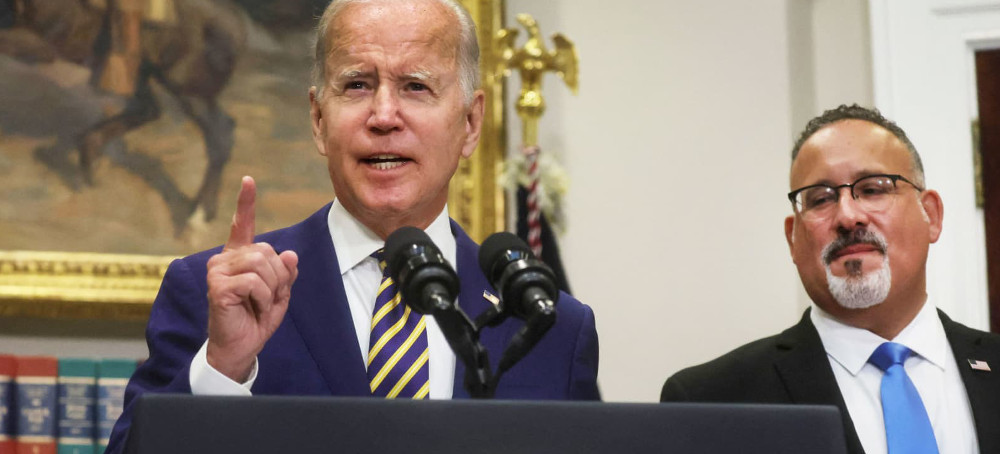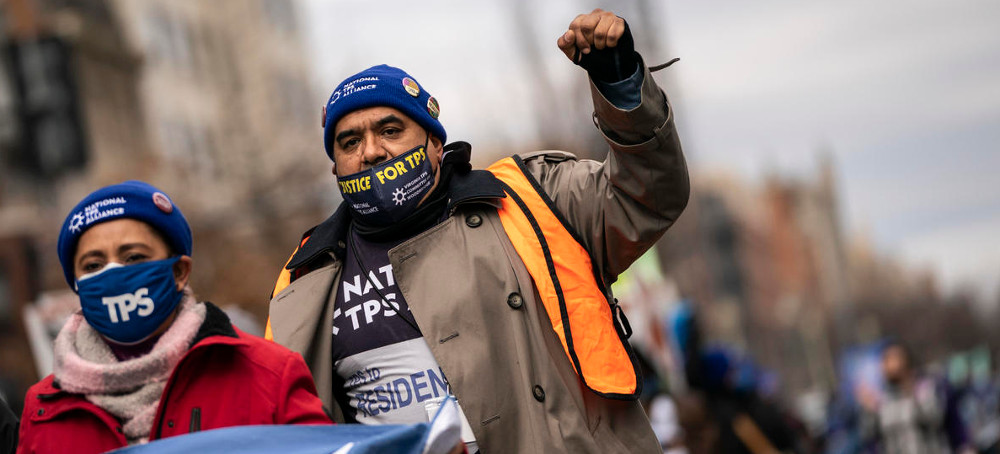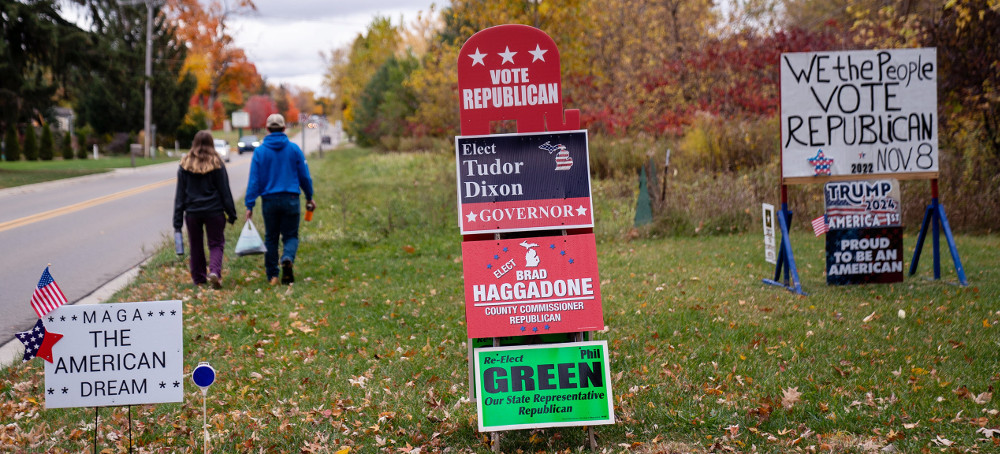Live on the homepage now!
Reader Supported News
The article below is satire. Andy Borowitz is an American comedian and New York Times-bestselling author who satirizes the news for his column, "The Borowitz Report."
People around the globe marvelled at a democracy so robust it could withstand an outlay of cash greater than the gross domestic product of nations such as Tajikistan, Montenegro, and Somalia.
“In my country, I would worry that spending ten billion dollars on campaign ads would result in the entire government being ousted,” a resident of Tajikistan said. “But America is such a great nation that you can spend that much and the results are barely detectable.”
“When you imagine what you could do with ten billion dollars, you immediately think of building new roads or schools,” a citizen of Montenegro said. “But America’s roads and schools must be in excellent shape, if they can afford to spend ten billion dollars on elections instead.”
“Ten billion dollars could pay for a lot of solar panels, wind farms, and other measures to mitigate climate change,” a resident of Somalia said. “Thank heavens Americans realized that political advertising is the thing that makes them No. 1 in the world and decided to spend it on that.”
READ MORE U.S. President Joe Biden is flanked by U.S. Secretary of Education Miguel Cardona as he speaks about administration plans to forgive federal student loan debt on August 24, 2022. (photo: Leah Millis/Reuters)
U.S. President Joe Biden is flanked by U.S. Secretary of Education Miguel Cardona as he speaks about administration plans to forgive federal student loan debt on August 24, 2022. (photo: Leah Millis/Reuters)
“Courts have issued orders blocking our student debt relief program,” according to a note on the forgiveness application page at Studentaid.gov. “As a result, at this time, we are not accepting applications. We are seeking to overturn those orders.”
The suspension of the forgiveness program comes shortly after a federal judge in Texas rejected President Joe Biden’s executive action in August to cancel up to $20,000 in student debt for tens of millions of Americans.
“In this country, we are not ruled by an all-powerful executive with a pen and a phone,” wrote Judge Mark Pittman of the U.S. District Court for the Northern District of Texas, in his 26-page decision. Pittman, who was appointed in 2019 by former President Donald Trump, sided with the Job Creators Network Foundation, a conservative advocacy group.
The Biden administration has stopped accepting applications for federal student loan forgiveness after a court struck down its plan on Thursday evening.
“Courts have issued orders blocking our student debt relief program,” according to a note on the forgiveness application page at Studentaid.gov. “As a result, at this time, we are not accepting applications. We are seeking to overturn those orders.”
The suspension of the forgiveness program comes shortly after a federal judge in Texas rejected President Joe Biden’s executive action in August to cancel up to $20,000 in student debt for tens of millions of Americans.
“In this country, we are not ruled by an all-powerful executive with a pen and a phone,” wrote Judge Mark Pittman of the U.S. District Court for the Northern District of Texas, in his 26-page decision. Pittman, who was appointed in 2019 by former President Donald Trump, sided with the Job Creators Network Foundation, a conservative advocacy group.
READ MORE Ukrainian troops hoist flag above building in Vysokopillya, in southern Kherson region. (photo: AndriyYermak/Twitter)
Ukrainian troops hoist flag above building in Vysokopillya, in southern Kherson region. (photo: AndriyYermak/Twitter)
When Kherson is fully back in Ukrainian hands, which now only seems a matter of time, this will represent a hugely consequential moment in a war now in its ninth month.
Nothing has gone Russia's way for months.
They've lost huge swathes of territory in the east, the flagship of their Black Sea fleet has been sunk and a crucial bridge from Russia to occupied Crimea is still out of action.
Now Russian forces have been forced to abandon the only provincial capital they had managed to capture since February's full invasion.
Just like the failed capture of Kyiv, holding on to Kherson simply became untenable.
This is the culmination of a patient, carefully-staged sequence of military moves, which began in July when Ukrainian forces, using newly-acquired American Himars rocket systems, attacked key bridges linking Russian forces in and around Kherson with their supply lines to the east and south.
Having isolated Russian forces, and convinced Moscow that Kherson was about to be attacked, Kyiv then launched its lightning offensive far to the north-east, around Kharkiv, taking Moscow completely by surprise.
But Kherson was always the big prize. In early October, an explosion closed the Kerch Bridge, which links Russia with occupied Crimea.
This was embarrassing for Moscow - the bridge was a pet project of the Russian leader, Vladimir Putin - but it also represented another massive setback for Russian forces in Kherson as it severed another key supply line.
Despite Mr Putin's claim that Kherson would be Russia "forever", following Moscow's orchestrated referendum at the end of September, the military situation for his forces west of the Dnipro river was increasingly precarious.
Quietly, and mostly at night, Russia's withdrawal began.
When the new commander of Russian forces in Ukraine, Gen Sergei Surovikin, appeared on television on Wednesday, apparently asking the defence minister's permission to order his troops to leave the city, this staged bit of theatre marked the end of the process, not the beginning. Anything of value had already gone.
The Dnipro river is a huge natural defensive line, now with almost no viable crossing points. With winter approaching, it makes plenty of military sense for Russia's demoralised troops to use it as a shield against further Ukrainian advances.
Sections of the battered Antonivskiy bridge, hit for months by Ukrainian rockets, have now been demolished by Russian forces.
Satellite imagery shows freshly prepared trench lines all along the river's eastern bank, as well as newly fortified positions at key crossing points into Crimea.
But even as Ukrainian soldiers are mobbed by grateful civilians in the centre of Kherson, officials in Kyiv continue to sound cautious.
Ukrainian intelligence suggests that thousands of Russian troops may still be in Kherson and could still fight on.
There are also fears of mines and booby traps.
Those fears will be realised or evaporate in the coming hours. The battle for Kherson is almost over.
As they hunker down in their new positions across the river, the Russians must be wondering what Ukraine's next move will be.
Pro-choice coalitions prevailed in red, blue, and purple states.
Counting a pivotal ballot measure Kansas voters weighed in on in August, reproductive rights have been on the ballot in six states since the Supreme Court overturned Roe v. Wade in June. Each time, abortion rights supporters have won.
While Democratic candidates running on abortion access also did extremely well in their contests this week, the vote tallies indicate that the ballot initiatives were often able to draw even more support than the Democratic candidates, garnering votes from individuals who otherwise cast ballots for Republicans, libertarians, or no candidate at all.
“Organizers communicated in a nonpartisan way and that was key,” said Ashley All, who served as communications director for the pro-choice coalition in Kansas. “Their messaging around personal liberty and reproductive freedom and protecting the constitutional rights of women to make the decisions for themselves resonated because it’s shared American values.”
The organizers also succeeded in winning over voters who may personally oppose abortion or have reservations about it. While a majority of Americans say they believe Roe v. Wade should be upheld, roughly one-third of those backing legal abortion do not personally support it. And many who support abortion rights believe it should only be legal in cases of rape or a threat to a woman’s life.
Ethan Winter, the research and strategy director for Families United for Freedom, an abortion rights political action committee, emphasized that the ballot measure campaigns all leaned heavily on persuasion tactics.
“Montana is a heavily Republican state, Kentucky is a heavily Republican state,” he told Vox. “All of these victories depend on Republicans voting for you, on people who self-identify as ‘pro-life’ voting for you.” In Kansas, where Trump won handily in 2020 and registered Republicans outnumber Democrats almost two to one, the pro-choice side won by a nearly 20-point margin. Even California’s measure codifying abortion rights in the state constitution passed this week with roughly 6 percent more support than other Democrats currently have on the statewide ballot.
Abortion rights organizers say they hope their successes this year across diverse states inspires other leaders to follow suit. How to get issues on the ballot varies from state to state; in some cases citizens can collect signatures, while in others lawmakers have to approve turning issues over to voters. In Michigan, activists collected more than 750,000 signatures to get their abortion rights measure on the November ballot. In Montana, Kentucky, and Kansas, by contrast, Republican lawmakers had voted to place their anti-abortion measures on the ballot.
“Our resounding victory now provides a model for the future of coalition-based reproductive ballot initiatives all across the country,” declared Nicole Wells Stallworth, the executive director for Planned Parenthood Advocates of Michigan, in a press conference on Wednesday.
“I’m hoping other states are looking at the outcomes of last night,” Jodi Hicks, the head of Planned Parenthood Affiliates of California, told Vox. “And looking at what they too can do and really start polling, message-testing, and laying the groundwork.”
Voters don’t like big status quo disruptions, and overturning Roe was just that
This past summer when Kansas voters went to cast their ballots, advocates for abortion rights were cautiously optimistic they’d have one advantage on their side: status quo bias.
Americans tend not to like big, disruptive changes, which is why political science researchers believe they observe a “status quo bias” when people weigh in on ballot initiatives. Voters often reject measures they perceive as introducing major change.
Anti-abortion politicians in Kansas had proposed an amendment to the Kansas constitution that would have overruled a Kansas Supreme Court decision affirming Kansans’ right to end a pregnancy. Passing the amendment would have given state lawmakers the power to ignore this ruling and legislate a total abortion ban in the wake of the Dobbs decision.
Activists in Kansas, in other words, could frame the amendment as an effort to take away rights Kansans currently enjoyed under their state constitution, something they called extremist, radical, and disruptive. This general electoral instinct to avoid major shifts to the status quo, organizers believe, helped them defeat the amendment in August.
While the abortion ballot choices on Tuesday weren’t quite as straightforward as asking voters whether they want to remove an existing state constitutional protection, organizers did lean on “status quo bias” messaging in their respective campaigns. In Michigan, for example, though Proposition 3 was an affirmative amendment to codify reproductive freedom in Michigan’s constitution, activists framed their language around the idea of restoring the rights of Roe v. Wade, of bringing back the reality Americans had known for five decades.
In Kentucky activists similarly emphasized a theme of restoration. “We focused our messaging on restoring access and making sure things do not go any further in the extremist direction,” explained Rachel Sweet, who led the Kentucky coalition organizing to defeat the anti-abortion amendment.
Abortion rights organizers used state-specific messaging to win
Activists and researchers experimented with different messages and messengers to win their ballot initiative campaigns, deploying themes that were specific to the histories and values of each state.
In Montana, for example, organizers looked to capture the deep sense of pride voters have in their state’s right to privacy. “Montanans of every ideology here are deeply proud of our constitution which enshrines the right to privacy,” said Hillary-Anne Crosby, a spokesperson for the coalition organizing to defeat Montana’s anti-abortion ballot measure. “This amendment really came down to private medical decisions.”
Montana’s referendum — known as LR 131 — was spurred by a bill Republican lawmakers passed last year asking voters to affirm that an embryo or fetus is a legal person with the right to medical care if it survives an abortion or delivery. Under the law, health care providers could face up to 20 years in prison and a $50,000 fine if they failed to provide such care.
While Republican lawmakers framed the measure as a moral choice for anyone opposed to abortion, reproductive rights advocates argued that the proposal itself had little to do with abortion and everything to do with palliative care and compassion for bereft parents.
That’s because infanticide is already illegal in Montana, and the idea that infants were being killed after an abortion is intentionally misleading, part of a longstanding effort by anti-abortion leaders to depict “botched abortions” that they say can result in live births.
Under current Montana law, if an infant has a fatal prognosis parents can spend those final and few moments holding their dying child and saying goodbye. Under LR 131, a doctor would have been obligated to take the infant away to attempt medical treatment, even if they knew nothing would work.
In mobilizing support against the referendum, advocates chose to de-emphasize abortion, often not mentioning the word at all. They ran ads featuring neonatologists, obstetricians and pediatricians, and grieving parents who said elected officials wanted to politicize their tragedies. Leaning in on status quo bias, doctors gave media interviews explaining how the proposed amendment would threaten the existing rights of parents and criminalize “the current practice of medicine.”
“We’re not trying to pull the wool over anyone’s eyes, we’ve been clear that one of the values of Compassion for Montana Families is uplifting and empowering reproductive and sexual health care,” Crosby told Vox. “But we felt abortion language was a misleading, deceptive thing to be talking about, and we wanted to accurately reflect what the bill in question would mean.”
This doesn’t mean Montana advocates aren’t celebrating the outcome as a victory for reproductive rights. “Conservatives tried to make abortion a boogeyman and people didn’t buy it,” Crosby added.
Vermont organizers also emphasized, in their campaign messaging, doing things “the Vermont way” — referring to the state’s independent and nonpartisan ethos.
“Vermont is sometimes seen as this very liberal place because of Bernie Sanders or whatever, but historically Vermont has held a Republican majority as well as the governor’s seat, and Vermonters regularly split their tickets,” said Lucy Leriche, a spokesperson for the abortion rights coalition in Vermont.
Vermont, unlike most other states, also enjoyed 50 years of unlimited and unrestricted reproductive freedom. While states were permitted under Roe v. Wade to restrict pregnancies after viability (typically around 24 weeks in a pregnancy) Vermont lawmakers never did.
“The [anti-abortion] side is very quick to talk about all the bad things that would happen if you don’t restrict abortion rights, but in Vermont we never had any restrictions, so those arguments really do fall flat,” Leriche told Vox. “They don’t stick because we know better.” The measure to codify reproductive rights in Vermont’s constitution passed on Tuesday with 77 percent of the vote.
Abortion rights activists haven’t historically focused on state ballot measures
Shoring up abortion rights on the state level was not something reproductive health advocates prioritized when Roe v. Wade provided a nationwide constitutional protection. Anti-abortion activists would occasionally push state ballot measures, often in deep red states, but fighting them at the polls seemed less critical than challenging them in court for violating Roe.
“Ballot measures are a space where there hasn’t been a ton of money on the pro-choice side and I think Families United for Freedom is indicative of more money moving in, and what I hope to be a larger trend,” said Winter. Families United for Freedom raised about $2 million this cycle, contributing $600,000 in Kansas, $275,000 in Kentucky, $500,000 in Michigan and $275,000 in Montana. Rachael Bedard, the PAC’s executive director, told Vox that they partnered with and supported local grassroots organizations, providing them with polling and media support, and avoided “a super-imposed national strategy.”
Sweet, who managed the campaigns in both Kentucky and Kansas, told Vox that their success was driven by the expertise of these local grassroots leaders. “We also had a lot of volunteers who have never knocked doors for a candidate, and they don’t consider themselves super politically active,” Sweet said. “But they are concerned and motivated by this one issue.”
One key research point Families United for Freedom found is that even among voters who supported the overturn of Roe v. Wade, a majority of them want abortion to be legal to save the life of the mother and in the case of rape and incest. Even in a hypothetical scenario in which abortion was illegal, the group found, 16 percent of those who said they approve of the Dobbs decision wouldn’t want the woman who had an abortion to face penalties.
“In other words,” Bedard said, “they disapprove of abortion but less than they disapprove of criminalization.” Winning on these abortion ballot measures, Bedard said, means creating the space for someone to continue living their life as a “pro-life” person, while emphasizing that doesn’t extend to making their neighbor’s choice for them.
“We need to let voters have their own personal feelings about abortion, but invite them to join us in the fundamental belief that women should make the decisions for themselves,” added Ashley All, who joined Families United for Freedom after defeating the Kansas ballot measure. “That is pro-choice and that is a way to really bridge the gap.”
READ MORE Activists and citizens with temporary protected status march toward the White House on Feb. 23, 2021, in Washington, D.C., in a call for Congress and the Biden administration to pass immigration reform legislation. (photo: Drew Angerer/Getty)
Activists and citizens with temporary protected status march toward the White House on Feb. 23, 2021, in Washington, D.C., in a call for Congress and the Biden administration to pass immigration reform legislation. (photo: Drew Angerer/Getty)
The Department of Homeland Security (DHS) said in a notice that it will allow immigrants from these countries to continue living and working in the U.S. legally under the Temporary Protected Status (TPS) policy until at least June 2024. Created in 1990, TPS is a deportation relief program the U.S. can extend to nationals of countries beset by armed conflict, natural disasters or other humanitarian crises.
Thursday's announcement comes two weeks after court negotiations between the Biden administration and lawyers representing TPS holders broke down, paving the way for the Trump administration's decision to terminate the legal status of hundreds of thousands of immigrants enrolled in the program to take effect.
But in its notice on Thursday, DHS said immigrants from El Salvador, Nicaragua, Nepal and Honduras would get to keep their work permits and deportation protections at least 365 days after the department is allowed to end the TPS programs in question, or until June 30, 2024 — whichever date comes later.
The June 30, 2024, extension also applies to certain Haitian and Sudanese immigrants, but they are also eligible to apply for work permits and deportation protections under expansions of TPS programs for Haiti and Sudan announced by the Biden administration that are not affected by the litigation in federal court.
"DHS is well aware of the importance of Temporary Protected Status (TPS) in providing stability to people's lives," a DHS spokesperson said in a statement to CBS News on Thursday.
As of the end of 2021, 241,699 Salvadorans, 76,737 Hondurans, 14,556 Nepalis and 4,250 Nicaraguans were enrolled in the TPS program, according to U.S. Citizenship and Immigration Services (USCIS) data.
TPS allows beneficiaries to live and work in the country without fear of deportation, but it does not provide them a path to permanent residency or citizenship. Those who lose their TPS protections could become eligible for deportation, unless they apply for, and are granted, another immigration benefit.
As part of its immigration crackdown, the Trump administration tried to terminate TPS programs for hundreds of thousands of immigrants from El Salvador, Haiti, Nicaragua, Sudan, Honduras and Nepal. But those terminations were blocked in federal courts by lawsuits that argued the terminations were rooted in racial animus and not properly justified
In September 2020, however, the 9th Circuit Court of Appeals gave the Trump administration the greenlight to end the TPS programs, saying courts could not review DHS decisions related to the policy. The ruling, however, did not take effect, because attorneys representing the TPS holders asked the court to consider rehearing the case "en banc," or with all active judges participating.
The Biden administration, which pledged to prevent the deportation of TPS holders to "unsafe" countries, entered into court negotiations to try to settle the litigation over the Trump-era termination decisions. It also formally extended the TPS programs for immigrants from Haiti and Sudan.
After a year of court negotiations, attorneys for TPS holders announced on Oct. 26 that they had failed to reach a settlement with the Biden administration. Both parties are now waiting for the 9th Circuit to decide whether it will grant or deny the request to rehear the case.
If the request is denied, the 9th Circuit's ruling from September 2020 will become binding, unless the Supreme Court intervenes.
Ahilan Arulanantham, one of the attorneys representing TPS holders in the litigation, said Thursday's announcement was an "important victory." But he called it an "interim one."
"Despite today's extension, the Biden administration is still defending Trump's racist TPS termination decisions in court, which unless the Biden administration acts, will remain on the books," said Arulanantham, the co-director of the Center for Immigration Law and Policy at the UCLA School of Law.
Arulanantham called on the Biden administration to create new TPS programs for El Salvador, Nicaragua, Nepal and Honduras, just like it has done for Haiti and Sudan.
Democratic lawmakers have advocated for TPS holders to be allowed to apply for permanent residency as part of a proposal to legalize unauthorized immigrants who have lived in the U.S. for years. Many TPS holders have lived in the country for over two decades. The TPS program for El Salvador, for example, began in 2001.
But congressional Democrats and Republicans have not been able to forge an agreement on immigration for decades, and GOP lawmakers have increasingly opposed creating legalization programs, absent changes to U.S. border policy.
READ MORE Elon Musk at the Axel Springer Award ceremony in Berlin, Germany, Dec. 1, 2020. (photo: Liesa Johannssen-Koppitz/Bloomberg)
Elon Musk at the Axel Springer Award ceremony in Berlin, Germany, Dec. 1, 2020. (photo: Liesa Johannssen-Koppitz/Bloomberg)
What happens when trolls come for the world’s richest memelord?
Things were easier when the world’s richest man was simply a Twitter troll, lobbing grenades at its leadership and making juvenile references to the numbers “420” and “69.” But now the trolls have come for Musk.
The chaos is wreaking havoc on the platform, and creating challenges for Musk as he works to salvage his investment. Internally, he has spoken candidly about the bleak situation, claiming in an email to employees early Thursday that there is “a good chance Twitter will not survive the upcoming economic downturn” unless it can dramatically boost revenue from premium subscriptions.
It’s been hard to keep up with the constantly shifting storyline—even for the reporters covering it. For a timeline of Musk’s recent decision-making, read on:
Musk walks into the Twitter offices carrying a sink.
And tweets a video of it with the caption “let that sink in.” Don’t ask us why.
A couple of clowns pose as laid-off Twitter workers outside headquarters.
And actually manage to trick several media outlets. People losing their jobs is so funny, right?
The Verge reports that Musk will start charging $20 a month for verification, as part of a reconfigured “Twitter Blue” program.
Blue Checks everywhere lose their minds.
Hate speech goes ham on the platform.
Researchers from Montclair State University found an “immediate, visible, and measurable spike” in the amount of “vulgar and hostile” rhetoric on the site in the 12 hours since Musk took over. (Twitter will ultimately remove more than 1,500 accounts in an attempt to curtail this behavior.)
Musk actually lays off more than 3,000 Twitter employees…
….and then asks dozens of them to come back.
The affected employees were laid off “by accident,” according to Bloomberg.
Just kidding guys, blue checks will only cost $8.
And also if you already have one, you can keep it for free. And also you can post longer videos? And get fewer ads? And if you don’t buy it your tweets will be buried in a giant garbage heap?
But you cannot get them just yet because it’s almost Election Day and holy shit would that be a mess.
Twitter starts losing advertisers
Major ones—like General Motors, General Mills and United Airlines. Probably for reasons related to item No. 4.
Musk blames the advertiser exodus on activists who are “trying to destroy free speech.”
They tell us they’re not that worried about it.
Twitter suspends a bunch of people who were impersonating Musk.
Including comedians like Kathy Griffin and Sarah Silverman. Apparently comedy is not, in fact, legal on Twitter.
Musk hosts a Twitter Space to try to win advertisers back.
He acted like slightly less of a troll, but also compared the old verification system to one of America’s wars. (Civil War or Revolutionary? Your guess is as good as ours.)
Jesus Christ gets a verified account.
Along with fake accounts for George W. Bush, O.J. Simpson and Rudy Giulliani. Basically, the new verification system is going just great.
Multiple top privacy and security officers quit, according to the Washington Post, sparking concern from the FTC.
In the past two weeks, the company also lost its chief marketing officer, head of product, the chief customer officer, and head of people and diversity, to name a few.
Musk officially alienates everyone left at Twitter by demanding they all come back into the office full time.
And also calls the economic future “dire” and predicts Twitter will not survive it without “significant subscription revenue” in an email to staff.
Two more crucial execs jump ship.
My, it’s a thin crowd on the Titanic this evening. Insiders tell Axios: “It’s over ... Trust is gone." (One of the execs reportedly later un-resigned.)
We all die in a fiery blaze.
Hopefully.
READ MORE A section of the Amazon rainforest that has been decimated by wildfires is shown near Porto Velho, Brazil. (photo: Victor Moriyama/Getty)
A section of the Amazon rainforest that has been decimated by wildfires is shown near Porto Velho, Brazil. (photo: Victor Moriyama/Getty)
A new report from the World Wildlife Fund (WWF), called the Living Amazon Report, warns that threats to the Amazon have worsened in recent years, and could result in the disappearance of the biome altogether if more drastic action isn’t taken soon.
“The situation has begun to show signs of nearing a point of no return: seasons are changing, surface water is being lost, rivers are becoming increasingly disconnected and polluted, and forests are under immense pressure from increasingly devastating waves of deforestation and fire,” the report said. “This could lead to irreversible change in the near future.”
The report was presented at COP27 in Sharm El-Sheikh, Egypt, where the international community is discussing the implementation of policies to prevent climate change.
Cattle ranching, agriculture, land grabbing, fires and speculation have contributed to the loss of 18% of Amazon forests and the high degradation of another 17%, the report said. At the same time, pollution from mining and agriculture, and the introduction of non-native species are increasingly destabilizing the region’s freshwater ecosystems.
There are currently more than 600 infrastructure projects operating along rivers in the Amazon, the report said, with twenty road projects being planned and over 400 dams operating or in the planning stage. Meanwhile, mining operations continue to clear forest and dump harmful chemicals like mercury into the water, the report said.
Around 12.2 million square kilometers (4.7 million square miles) of the rainforest were cleared last year, according to PRODES, a satellite project monitoring deforestation.
As a result, the biome is nearing its “tipping point,” meaning it could soon transition from wet rainforest to dry savanna, and would become unable to sustain its current biodiversity. The Amazon region in Brazil and Bolivia is already showing clear signs of savannization, another recent report showed, with Colombia, Ecuador and Peru going in the same direction. Some studies say the tipping point lies somewhere around 25% forest cover loss. But according to the WWF report, it could also be less than that.
“There is no scientific consensus on the exact probability of reaching a point of no return because we do not know enough about some complex ecosystem factors,” the report said. “It is known, however, that the probability increases with greater deforestation, degradation and climate change.”
Reaching the tipping point could drastically alter the lives of the 47 million people who live and work in the Amazon region, the report said, among them more than 500 Indigenous groups. It would also have regional and even global implications, since the rainforest would be unable to serve its ecological function as a recycler of water and air pollution.
The Amazon recycles up to 75% of moisture. But if deforestation continues, there won’t be enough forest left to carry out that function, leading to a drop in precipitation, an extended dry season and a water deficit.
That dryness would mean an increase in fires and even more forest loss.. The Amazon stores as much as 733 Gt of carbon dioxide, and releasing much of it into the atmosphere would likely contribute to pushing global temperature increase above the 1.5°C safety threshold, the report explained.
“Urgent action is needed to avoid global repercussions and to ensure that this region can continue to regulate the planet’s climate and to provide environmental and cultural benefits to the world,” said Roberto Troya, Regional Director for WWF Latin America and the Caribbean.
Drastic times, drastic measures
According to the WWF report, it’s not too late to stop deforestation from pushing the Amazon past its tipping point. But it’s going to take massive collaboration from governments, civil society, the private sector and Indigenous communities, among other important stakeholders to make it happen.
The report advocated for the COICA-led “Amazon for Life” initiative to conserve at least 80% of Amazon forests by 2025.
The forestry and agricultural industry, banks and governments must work together, the report said, to monitor whether supply chains are contributing to deforestation. Beef, soy and other agricultural products have been found to clear primary forest without punishment because traceability systems aren’t always rigorous enough.
“Some companies are working harder than others to follow their own money,” said Kelly McNamara, a senior research and policy analyst in the International Climate and Agriculture Finance Program.
Existing protected areas, many of which are under threat of being downgraded to allow for infrastructure development, will require complex management plans that involve better monitoring and reporting by local communities and officials.
A strong sustainable forest management, in which forestry products are harvested without contributing to forest degradation, will also ensure the long-term health of forests while helping to combat illegal logging, the WWF report said.
The report stressed that Indigenous peoples are key to carrying out virtually all of these initiatives, as their livelihoods are often connected to their territories’ ecosystems. Fishing, ancestral agricultural systems, tourism and other cultural practices, it said, make Indigenous people critical players in protecting the Amazon in the future.
“Indigenous communities have been stewards of the land for hundreds of years, thousands of years,” McNamara said about the importance the report places on Indigenous communities. “They certainly have a critical role to play in preserving the native vegetation and keeping the biodiversity across the Amazon and cerrado in check.”
This article was originally published on Mongabay.
Follow us on facebook and twitter!
PO Box 2043 / Citrus Heights, CA 95611



No comments:
Post a Comment
Note: Only a member of this blog may post a comment.